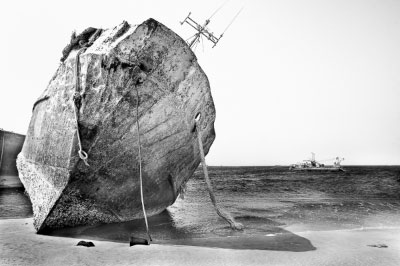

![]() Jan Smith has worked as a businessman and entrepreneur for much of his life. After selling his company five years ago, he committed himself to what he had long considered just a hobby: photography. His recent project captures the shells of abandoned ships in the world’s largest “ship cemetery”, in Nouadhibou, Mauritania. Smith spoke to PLANET about his body of work and the rugged journey that led him to Nouadhibou.
Jan Smith has worked as a businessman and entrepreneur for much of his life. After selling his company five years ago, he committed himself to what he had long considered just a hobby: photography. His recent project captures the shells of abandoned ships in the world’s largest “ship cemetery”, in Nouadhibou, Mauritania. Smith spoke to PLANET about his body of work and the rugged journey that led him to Nouadhibou.
How would you characterize your work?
I’m really drawn to things that are overlooked, what most people don’t seem to pay attention to. If you pay attention to what I’m taking a picture of, you’ll see the story behind it. But I don’t really want to tell you that story up front.
Can you explain the story behind the approximately 500 abandoned ships?
In the 1980s, the fishing industry was nationalized. And rather than turning in some of the ships to the government, some of the smaller companies simply left them languishing there. When the government took over the boats they realized they didn’t really have the expertise to maintain them. And so when eventually they’d break down, or they’d need an overhaul, and they ended up being abandoned in the bay as well. That made it into an ideal place to then cover up abandoning other ships [for] insurance fraud. Rather than recycling the boat or bringing it all the way back to the waters of Europe or China, it was easier to write them off as sunk or unusable and claim the insurance.





 Facebook
Facebook Permalink
Permalink Digg
Digg Reddit
Reddit LinkedIn
LinkedIn StumbleUpon
StumbleUpon Tumblr
Tumblr

